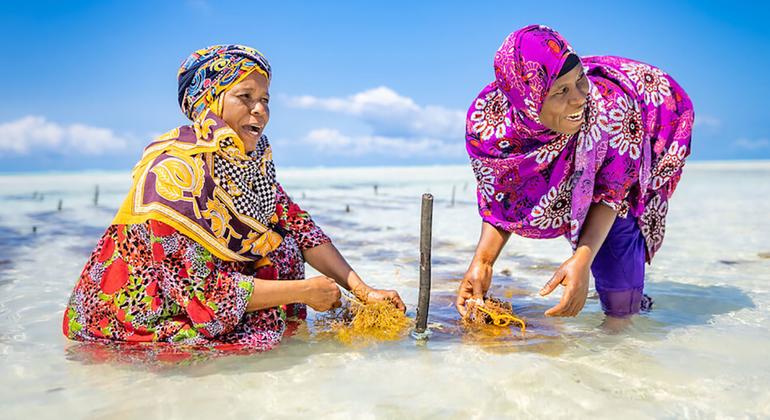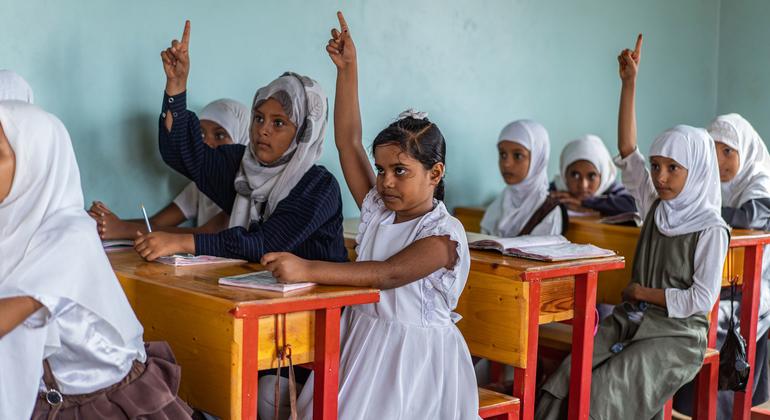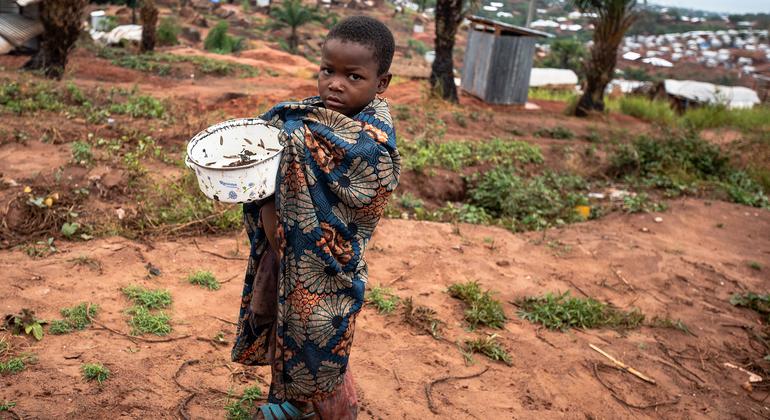HoldEvery 10 years, this year’s meeting- the fifth of its kind- will focus on re-setting the needs of the 46 less developed countries at the top of the global agenda and supporting them in efforts to return to the path of sustainable development.
The least developed countries, listed on the United Nations list, show the lowest indicators of social and economic development through a set of indicators.
The per capita national income in these countries is less than $ 1018; Compared to about $ 71,000 in the United States, according to World Bank data.
These countries record low degrees in nutrition indicators, health, school enrollment, and reading and writing skills.
At the same time, high degrees are recorded in economic and environmental weaknesses that measure factors such as geographical dimension, as well as reliance on agriculture and risk of exposure to natural disasters.
The list of less developed countries currently includes 46 countries, including 6 Arab countries, the vast majority of which are in Africa. The list is reviewed every three years by the United Nations Economic and Social Council. Six countries of the least developed country graduated between 1994 and 2020.

About 1.1 billion people- or 14 percent of the world’s population lives in the least developed countries- and more than 75 percent of these people live in poverty.
The least developed countries are more growing than others to the risk of exacerbation of poverty and survival in a state of failure to advance, as they are vulnerable to external economic shocks, natural disasters and those of man -making, infectious diseases and climate change.
The temperature of the planet is now on its way to rise by about 2.7 degrees Celsius during this century, which may lead to catastrophic effects in the least developed countries. Although these countries contribute only to a small amount to carbon emissions, they face some of the greatest risks caused by climate change.
Meanwhile, the least developed countries are among the most affected countries of the Corona virus. All of these countries have witnessed- with the exception of eight- negative growth rates in 2020, and the repercussions of the health pandemic will continue for a longer period than in the rich countries.
Religion is a major problem for all the least developed countries: four of which are classified as suffering from debts (Mozambique, Saint Tommy and Berncy, Somalia, Sudan), and 16 of them are very vulnerable to the danger of debt distress. Thus, the least developed countries require the highest level of attention from the international community.

The United Nations efforts aimed at changing the increasing marginalization of less developed countries in the global economy, and putting it on the path of sustainable growth and development to the late 1960s.
The international development strategy of the seventies included special measures for the least developed countries, including:
The first conference for the lowest developed countries was held in Paris in France in 1981, and the fifth conference was scheduled to be held on the occasion of the fiftieth anniversary in March 2022, but it was postponed until the current year due to the outbreak of Corona virus.

Doha’s work program is the development road map for the lowest developed countries, agreed upon in March 2022.
Doha’s work program includes six main concentrations:
The complete implementation of the Doha’s work program will help the least developed countries to address the Corona Shura and the resulting social and economic effects, and enable it to return to the right path to achieve sustainable development goals, including addressing climate change effects.
The full text of the Doha Work Program in the six official languages of the United Nations. You can see the Arabic version.

The United Nations and the lowest countries will meet, heads of state, government, development partners, private sector, civil society, parliamentarians and youth to agree on partnerships, obligations, innovations and plans in an attempt to reach the sustainable development goals.
The United Nations Secretary -General is scheduled to deliver a speech at the conference and has already highlighted the importance of supporting the least developed countries, stressing that“Doha’s work program reminds us that global recovery depends on the least developed countries obtaining the support it needs. It needs bold investments in health, education and social protection systems, and it needs all resources for the full implementation of the 2030 plan and sustainable development goals.”
Since the least developed countries take the first step towards these goals, they will achieve certain goals according to which they can get out of setting the least developed countries.
Six countries of the least developed countries graduated: Botswana (1994), Cape Verde (2007), Maldives (2011), Samoa (2014), Equatorial Guinea (2017), and Vanuato (2020).

List of the least developed countries:
The following 46 countries have been included as the least developed countries by the United Nations (the list is updated until March 2023):
Africa includes 33 countries:Angola, Benin, Burkina Faso, Burundi, Central African Republic, Chad, Comoros, Democratic Republic of the Congo, Djibouti, Eritrea, Ethiopia, Gambia, Guinea, Guinea Bissao, Lisuto, Liberia, Madagascar, Malawi, Mali, Mauritania, Mozambique, Niger, Rwanda, São Tomi and Berncy South Sudan, Sudan, Tanzania, Togo, Uganda and Zambia.
Asia includes 9 countriesAfghanistan, Bangladesh, Bhutan, Cambodia, People’s Democratic Republic, Myanmar, Nepal, East Timor and Yemen.
It includes the Caribbean rootOne country is Haiti.
The Pacific region includes three countriesKiribas, Solomon and Tofalo Islands.

Leave a Reply